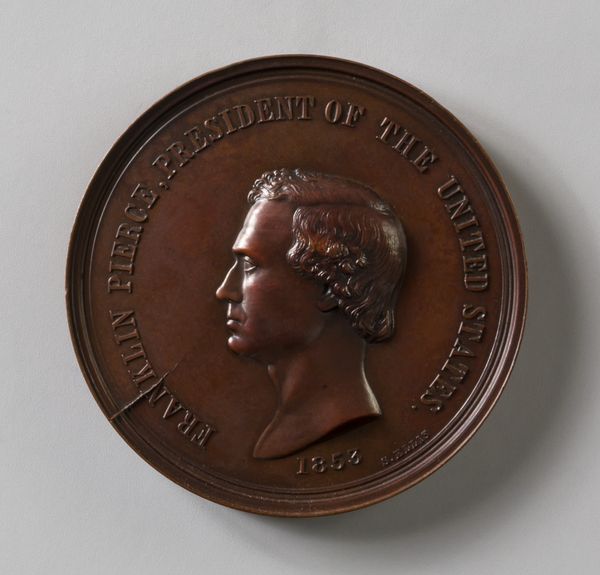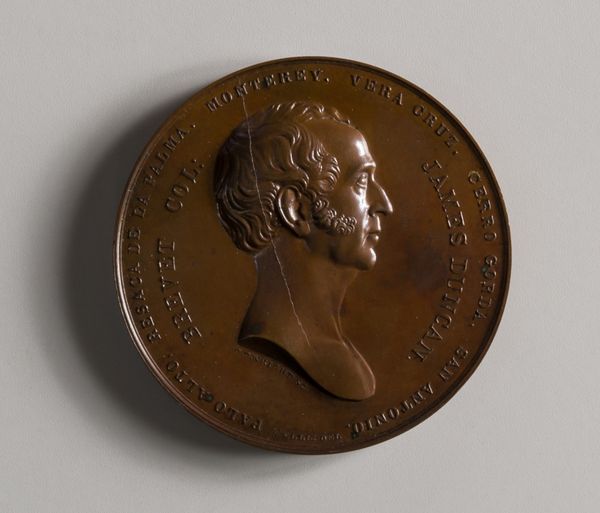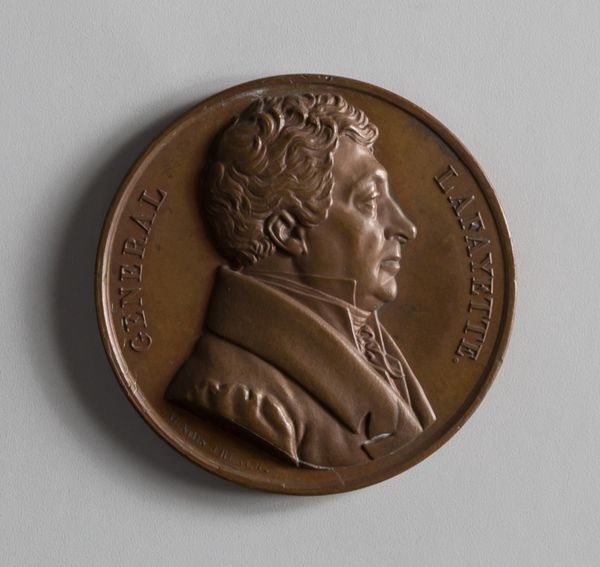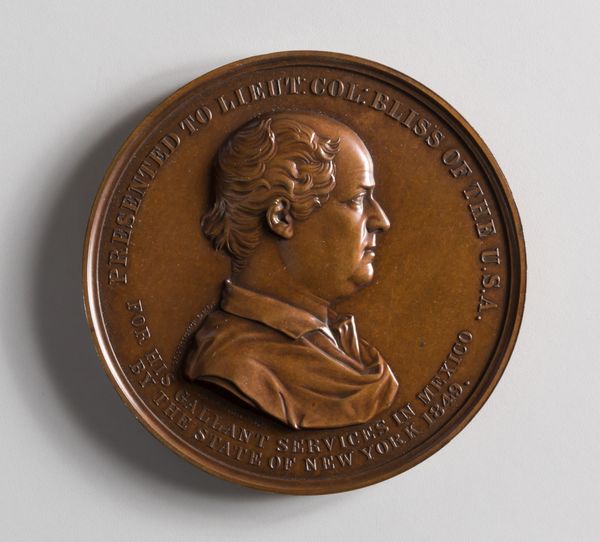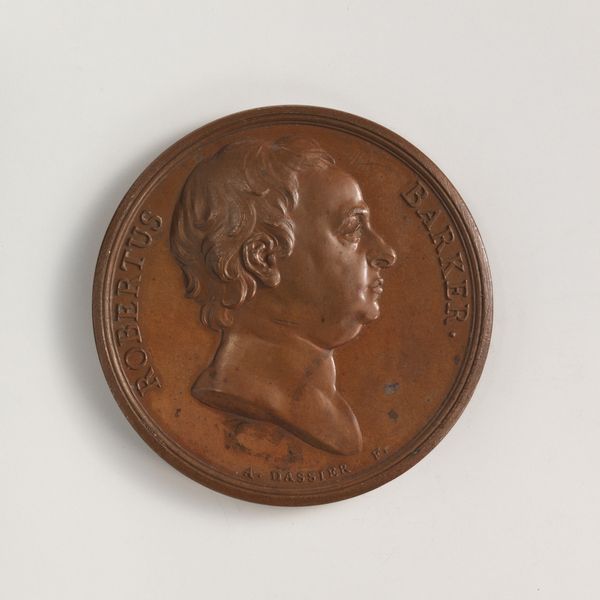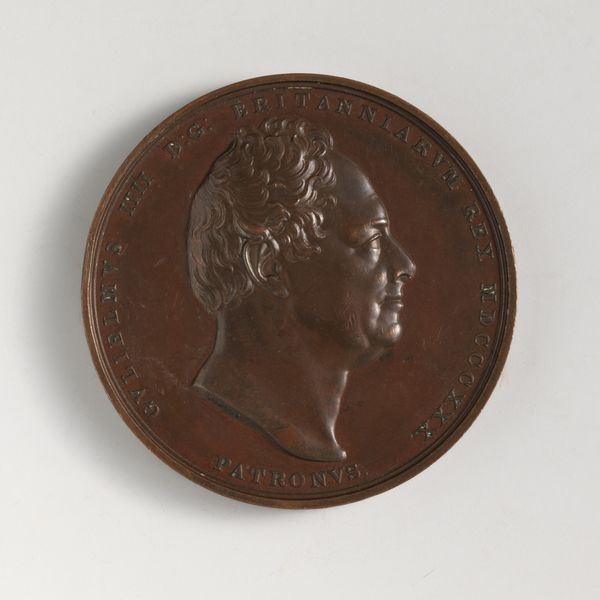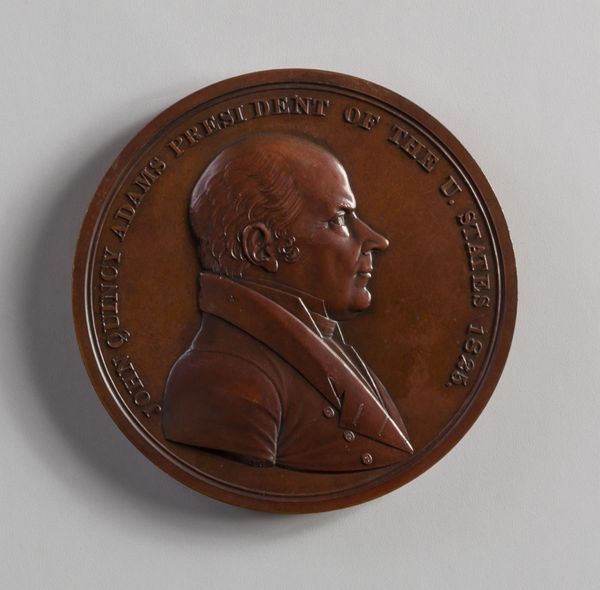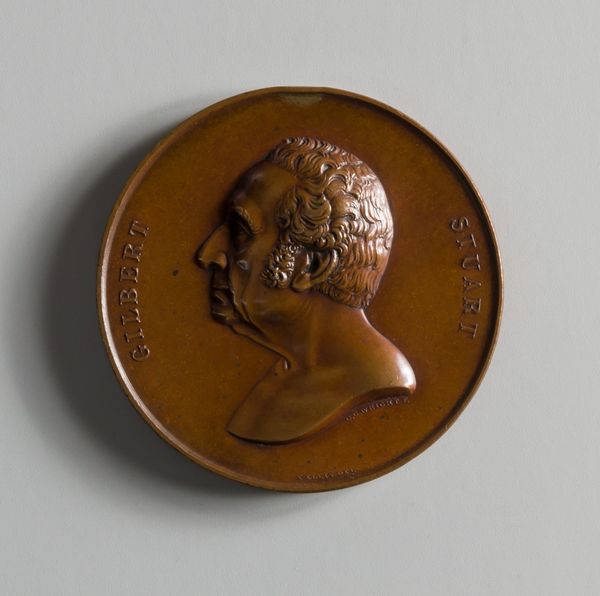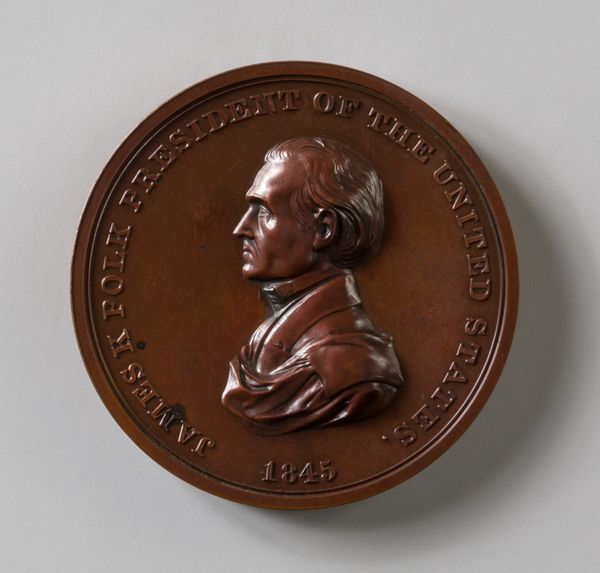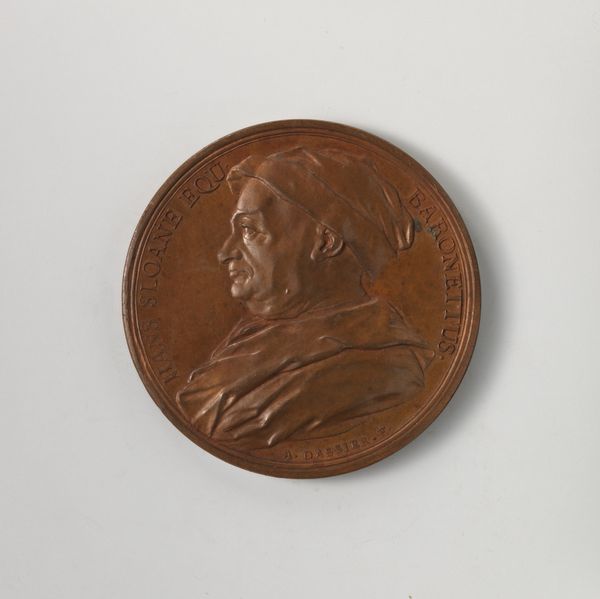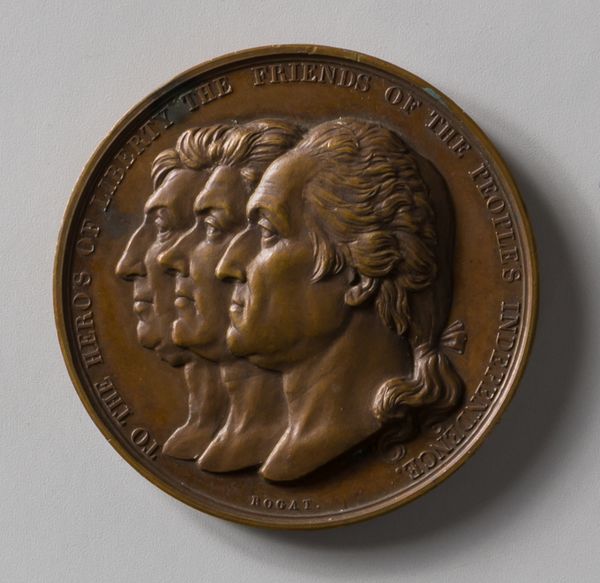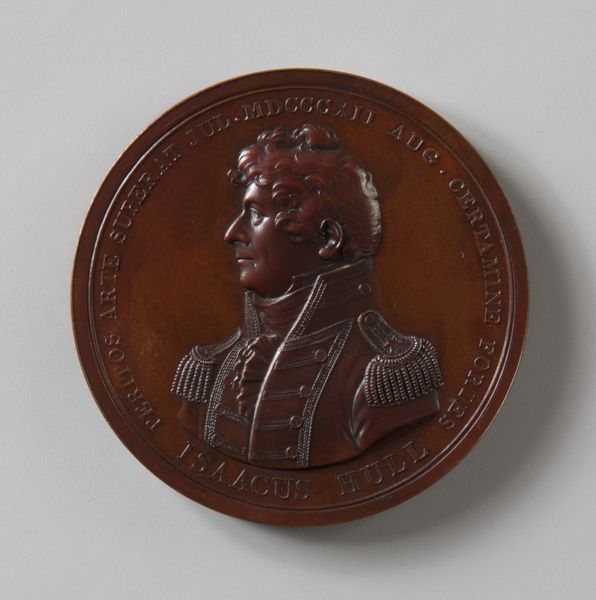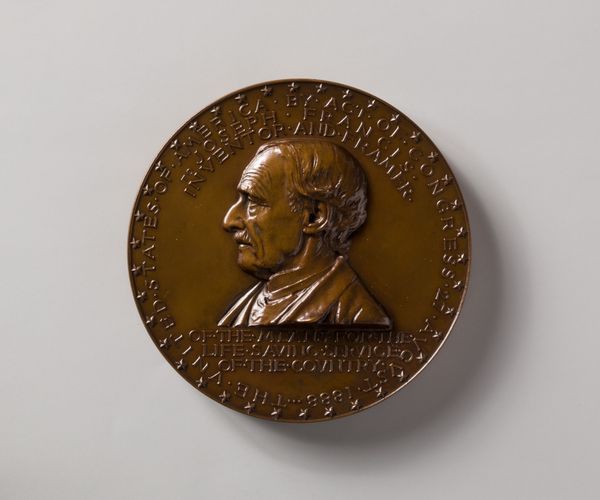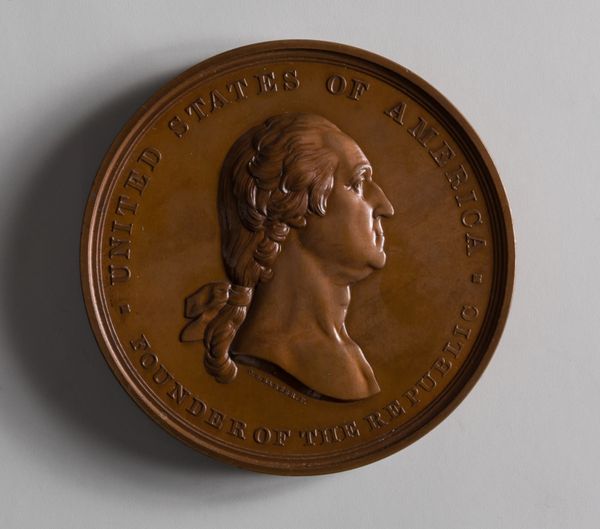
bronze, sculpture
#
portrait
#
neoclacissism
#
sculpture
#
bronze
#
sculpture
#
history-painting
#
realism
Dimensions: Diam. 2 1/2 in. (6.4 cm)
Copyright: Public Domain
Curator: What a stern-looking profile! There’s something about these commemorative bronze portraits, they’re so... authoritative. Editor: They are, aren't they? The "Medal of Millard Fillmore," crafted by Salathiel Ellis around 1850, definitely has that gravitas. It’s interesting how these objects can tell us so much about how power was perceived, or maybe even *performed*, at that time. Curator: Performance is the perfect word. Everything, from the neoclassical font to the precise, almost hyper-realism of the portrait, it screams, "Important man!" You know, I sometimes wonder what Fillmore himself thought of it. Did he feel that this depiction captured his essence, or was it simply part of the political packaging? Editor: I think the question goes deeper. Considering Fillmore's historical position—his role in signing the Compromise of 1850, a set of laws designed to delay secession—this medal becomes more than just a portrait. It's a statement of power at a time when the nation was deeply divided over slavery. Curator: That’s the dark underbelly, isn't it? Art always reflects the light and shadow. I get this odd feeling, staring at it – respect for the craft, uneasiness about what the craft *enabled*. Editor: Precisely. Ellis's skill as a sculptor is undeniable; you can see the detail in Fillmore’s hair, the sharp lines of his nose, his unwavering gaze. But all that technical brilliance is in service of, in a sense, mythologizing a figure who, through his actions, perpetuated significant injustices. Curator: So, are we saying that appreciating the art requires confronting the uncomfortable truths it embodies? Can we separate form from its function here, or are they intertwined, inseparable? Editor: Inseparable, I believe. The medal exists as both a work of art and a historical document, laden with the complexities of its time. Acknowledging that complexity, allows us to understand both the artistry and the ethical challenges it presents. Curator: Well, I came in here wanting to riff on aesthetics and instead I feel like I have been handed a weighty philosophical question. A great challenge. Editor: A challenge indeed. Perhaps, in that challenge, lies the most profound connection we can have with art from the past. To sit with the questions.
Comments
No comments
Be the first to comment and join the conversation on the ultimate creative platform.
